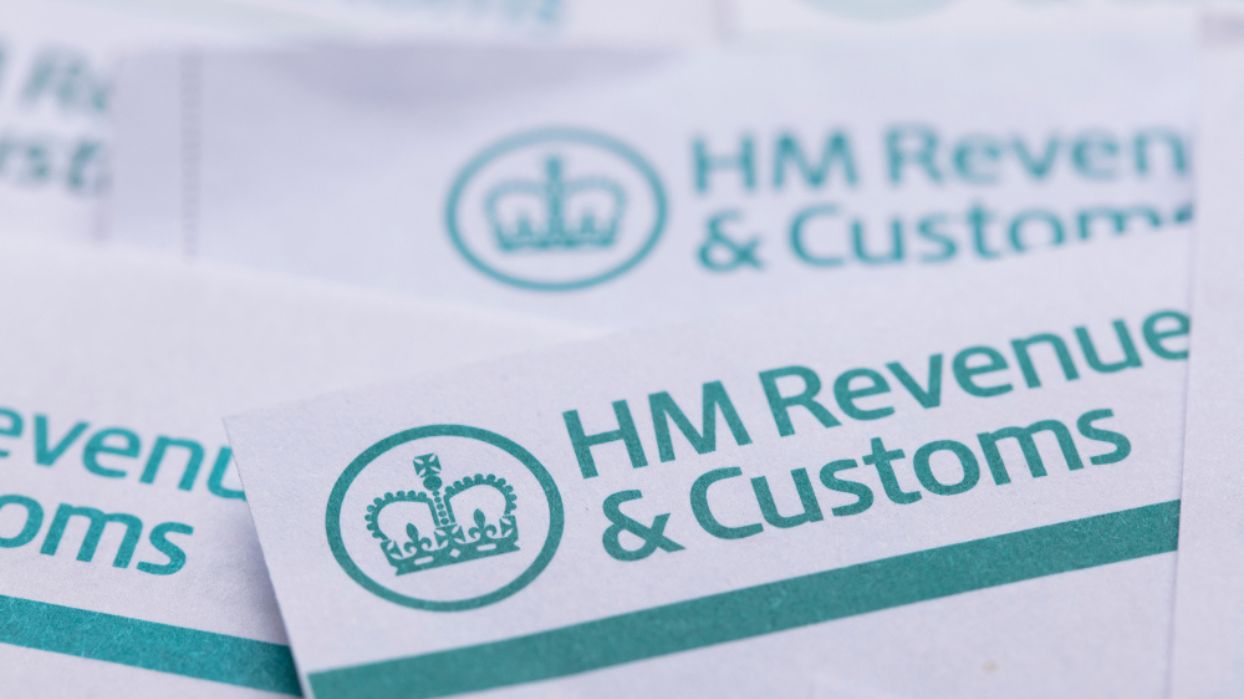The First-tier Tribunal considered the VAT liability of outsourced services supplied between group companies in a dispute between JPMorgan and HMRC. In an article first published by Tax Journal (subscription required), Anastasia Nourescu of Stewarts and Naima Khalid of EY consider the impact of the recent decision.
VAT practitioners and in-house advisers at financial institutions await each development on the VAT exemptions for financial services with bated breath. Will this case be the one to clarify the scope of the exemptions? Unfortunately, the answer to that is usually no.
The exemptions were introduced to simplify the taxation of financial services by avoiding the practical difficulties that arise in identifying the consideration for financial transactions. However, simplification may seem an unlikely prospect in the context of an increasingly complex and international financial sector. The myriad of ways in which financial services are supplied and the intricate set-up of financial institutions mean that the application of the law can be very difficult to predict, as it will entirely depend on a particular set of facts. This is perfectly exemplified by the recent decision of the First-tier Tribunal (FTT) in the case of JPMorgan Chase Bank, NA v HMRC [2023] UKFTT 856 (TC) (JPMorgan).
Financial services: VAT exemption and single supply
Council Directive 2006/112/EC (the PVD) sets out two types of VAT exemption: exemption in the public interest (article 132) and exemption for other activities (article 135). Article 135 includes, among others, exemptions for financial and insurance services, which include insurance and reinsurance, granting and negotiation of credit, transactions concerning payments, and transactions in securities. The exemptions are limited and do not cover every type of financial service.
The following are two of the most commonly used financial services exemptions, which were also the subject of this case:
- article 135(1)(d): ‘transactions, including negotiation, concerning … payments, transfers … but excluding debt collection’ (often referred to as the ‘payment exemption’); and
- article 135(1)(f): ‘transactions, including negotiation but not management or safekeeping, in … securities, but excluding documents establishing title to goods, and the rights or securities referred to in Article 15(2)’ (often referred to as the ‘securities exemption’).
There is extensive EU case law on these exemptions. For a supply to be exempt, the service must form a distinct whole that fulfils the specific and essential functions of a financial service, and has the effect of altering the legal and financial situation as between the parties (see, in particular, Sparekassernes Datacenter v Skatteministeriet (Case C-2/95) (SDC). The tests for exemption are functional in that they are based on the nature of the service supplied and not the status of the supplier.
These exemptions were implemented into UK law by VATA 1994 s 31 and Sch 9 Group 5. The items in Group 5 largely mirror those in article 135 of the PVD and, in particular, exempt the issue, transfer or receipt of ‘any security for money or any note or order for the payment of money’ (item 1) and of ‘any security or secondary security’, including shares, stocks, bonds and debentures (item 6). Item 5 also provides an exemption for ‘[t]he provision of intermediary services in relation to’ these transactions ‘by a person acting in an intermediary capacity’ in relation to items 1 and/or 6.
Single or multiple supply issues often come into play in determining whether an exemption applies to a particular transaction. Financial services are extremely complex and can have a number of components that, if supplied separately, may carry different VAT liabilities.
There are two main ways to approach a single supply analysis:
- where one or more elements make up a principal supply and the other elements do not constitute for customers an end in themselves but a means of better enjoying the principal service supplied (see Card Protection Plan Ltd v HMRC (Case C-349/96) (CPP); or
- where it is not possible to identify an ancillary or principal element, the supply should nevertheless be treated as one that, from an objective point of view, it would be artificial to split (see Levob Verzekeringen BV v Staatssecretaris van Financiën (Case C-41/04) (Levob).
The starting point to the single supply analysis should be by reference to the contractual documentation, as confirmed in Mainpay Ltd v HMRC [2023] STC 30.
Background to the case
JPMorgan Chase Bank, NA (‘CBNA’) is a US-regulated bank with New York headquarters and branches around the world, including in London. It is a member of the JPMorgan global corporate group and the primary local subsidiary of JPMorgan Chase & Co. CBNA provides infrastructure services to a UK financially regulated indirect subsidiary, JPMorgan Securities plc (SPLC). To enable it to make supplies to SPLC, CBNA buys in services from third parties.
CBNA views the supplies it makes to SPLC as falling within two categories:
- services that make up the trading infrastructure necessary for SPLC to carry out transactions with its clients, which are described as ‘business delivery services’: these services are made up of four functions – quantitative research, technology, operations and market risk – which work together to provide a bespoke service to each of SPLC’s business areas (such as equities, rates, currencies and emerging markets, and commodities); and
- general corporate services that support the business, such as human resources, compliance, real estate, tax and legal, which are described as ‘support services’.
These services are supplied under an umbrella agreement called the global master services agreement (GMSA), which governs the provision of all inter-company services within the JPMorgan group, including services provided by CBNA to SPLC. Each group company, including SPLC, agrees to be bound by the GMSA pursuant to an addendum to the main agreement. The GMSA was updated in 2019, and while its substance remained largely unchanged, the new version distinguished between business delivery services and support services.
CBNA and SPLC are members of the same VAT group. While supplies between the two entities would normally be disregarded, in this case they are not, because CBNA buys in services to make the supplies to SPLC, thus bringing it within the scope of the anti-avoidance provisions in VATA 1994 s 43(2A) and (2B).
While CBNA accepted that the support services are taxable, it considered that it made separate supplies of business delivery services to each business area within one of SPLC’s business segments with each of these supplies exempt under article 135(1)(d) or (1)(f). HMRC disagreed on the basis that CBNA makes a single taxable supply of taxable ‘support function services’ to SPLC. HMRC issued CBNA with its decision and assessments reflecting that view. CBNA appealed. The FTT heard the appeal earlier this year and dismissed it on 29 September 2023.
The dispute centred around two main issues:
- whether CBNA made a single supply or multiple supplies to SPLC (the ‘supply issue’); and
- whether any such supply was exempt from VAT (the ‘exemption issue’).
HMRC raised a third argument, namely that neither the GMSA nor the invoices identified any specific exempt supplies made by, for example, technology or operations to a specific business unit or the specific consideration paid for such supplies. The FTT gave short shrift to this argument, and agreed with the taxpayer’s submissions that ‘one would ‘hardly expect’ (as counsel for the taxpayer put it) the contractual documents [in the context of intra-group supplies] to identify whether any given supply is taxable or exempt’. The FTT noted that the VAT liability only came into play when s 43(2A) of VATA 1994 was applied and so it was appropriate that the VAT team applied a ‘semi-manual’ process to classify these as part of the VAT return preparation process.
The supply issue
Both parties accepted that it was not possible to identify any predominant supply to which others were ancillary. Therefore, the crucial question was whether the two elements of the supply formed a single supply in accordance with Levob.
HMRC contended that although disparate and numerous, both the business delivery services and support services were provided under the GMSA and were all required for SPLC to undertake its business. HMRC also referred to the fact that earlier versions of the GMSA drew no distinction between the two categories of services, which were only disaggregated in the 2019 version.
CBNA argued that the GMSA did not accurately reflect the true relationship with SPLC because this was an intra-group agreement drafted primarily for transfer pricing purposes and was intended to cover all supplies between the worldwide corporate group entities. As such, this was not specific to the supplies in this case and did not contain the same level of detail as if they had been executed between third parties. Properly construed, the GMSA constituted a ‘framework’ agreement under which each individual supply could be delivered.
CBNA argued that although the business delivery services and support services were both necessary for SPLC to carry on its business, the default position was to treat each supply as distinct and independent. This was on the basis that the business delivery services were specific and essential to the trading activities of each business area within SPLC, whereas the support services were part of the business overheads.
In determining the supply point, the FTT referred to the Court of Appeal’s decision in Honourable Society of Middle Temple v HMRC [2013] UKUT 250, which summarised the key principles for determining whether a transaction is a single composite supply. The FTT confirmed that it was necessary to consider the circumstances and essential features of the transaction from the objective point of view of a typical customer.
Although the FTT recognised that the business delivery services were necessary for SPLC to be able to undertake its trading activities, in its view this was not sufficient to mark them as distinct and independent. The support services, although not linked to individual transactions, were nonetheless necessary for SPLC to undertake its business. Therefore, the FTT held that viewed objectively, the typical consumer in SPLC’s position would consider there was a single overarching supply.
The FTT found that although there was a lack of detail in the contracts, that was not in itself a reason to conclude they did not reflect economic activity. It was noted that CBNA had extensive resources that could have been devoted to adopting a much more detailed framework had this been considered appropriate. Further, CBNA accepted that the contract did provide a ‘high level of proximation of the economic reality’. The FTT therefore agreed with HMRC that there was no requirement to ‘look behind’ the contract.
In the FTT’s view, the 2019 GMSA did not carry much weight on the basis that (i) most of the assessment period was before this version was implemented, (ii) the updated GMSA did not reflect any changes in the underlying business and (iii) one of the reasons for amending the GMSA was in light of the discussions with HMRC as to the VAT liability of the services.
The exemption issue
Having decided that there was a single composite supply of business delivery services and support services, the FTT considered whether that supply was standard-rated or exempt.
The FTT agreed with HMRC that it was not possible to identify any particular element of that supply as a principal service. SPLC relied on and could not operate without the trading platform and trading exercises provided by technology, operations, market risk and quantitative research, nor could it function without the support services.
Where it is not possible to identify a predominant element, the services must be considered as a whole for VAT purposes. Where different elements of a supply are ‘on the same footing’, the exemptions must be ‘interpreted strictly, since they constitute exceptions to the general principle that VAT is to be levied on all services supplied for consideration by a taxable person’, as held by the CJEU in Finanzamt Frankfurt am Main V-Höchst v Deutsche Bank AG (Case C-44/11). The FTT therefore held that the supply as a whole could not be covered by the exemption.
Although not strictly necessary, the FTT went on to consider whether the exemption applied to the business delivery services if a different conclusion were reached on the single supply point on appeal. The FTT considered this point in case of any further appeal, but with the caveat that it was not undertaking a comprehensive analysis. That caveat was apt, as its judgment on this point was high level.
The FTT based its analysis on a long extract from Target Group Ltd v HMRC [2021] STC 1662, which summarised the main principles established by case law on the application of the financial services exemptions. It held, based on SDC, that the question of exemption in the case of outsourced financial services should be determined by reference to the nature of the services provided and not by reference to the person supplying or receiving the services. The key question was therefore whether the services provided were essentially administrative or technical services (in which case they would be standard-rated) or financial services (in which case they would be exempt).
Using the example of hedging transactions, CBNA contended that, through the trading infrastructure, it was pointing out to SPLC opportunities to enter into transactions in securities and in some cases identifying and executing transactions itself with no involvement from the trader. In addition, where no trader was involved, CBNA played a further specific and essential role in setting key economic terms of the transaction, such as the price.
Ultimately, the FTT was persuaded by HMRC that these were technical or administrative services, as they consisted of data gathering, processing and management. In the FTT’s view, these services did not alter the legal and financial situation between SPLC and its clients, nor did they create, alter, or extinguish those parties’ rights and obligations in respect of securities. The fact that SPLC could not trade without these services did not matter. As such, the FTT found that the exemption did not apply.
Where does that leave us?
The FTT’s heavy focus on the contractual framework in the single supply analysis is concerning, if not entirely surprising, given that these were inter-company agreements. While it is trite law that the contract is the starting point in any analysis, the FTT in this case heard extensive evidence as to the nature of the business delivery services and the bespoke package they provided to SPLC’s business areas.
It is also disappointing that despite hearing extensive evidence on the way the services were provided in practice (and painstakingly summarising that evidence in its decision), the FTT did not give significant weight to the fact that the agreements did not reflect the economic reality as they were not specific to the supplies in question. Had the bank devoted its ‘considerable resource’ to providing a granular breakdown of the services in the GMSA, the FTT may have plausibly reached a different conclusion. This cannot be correct when the underlying substance remains unchanged.
It is not unusual for intercompany agreements to be insubstantial compared to agreements executed between third parties. However, in this case, the FTT has given them equal footing to commercial agreements negotiated on an arm’s length basis between unrelated parties.
Although this decision is particularly relevant to financial institutions, many of which may operate similarly to JPMorgan, it could also have wider application to corporate groups in other industries who may now wish to consider whether they should put in place more robust intercompany agreements. The findings around the weight to be given to the contracts will be relevant to many businesses for the purposes of establishing the VAT liability of supplies.
The FTT did not consider the exemption issue in detail due to its findings on the single supply issue, but its limited consideration is not helpful. Given the important points of principle, one can imagine the decision will be appealed. The FTT’s finding that the provision of SPLC’s entire trading infrastructure constituted no more than data-gathering and management appears to be an alarming oversimplification, especially in light of the lack of reasoning around this point. The FTT’s cursory analysis will no doubt be subject to scrutiny on appeal.
Finally, it would be interesting to see how the Upper Tribunal or higher courts might apply the findings in Target Group v HMRC [2023] UKSC 35 in this context, given the Supreme Court’s narrow construction of the payments exemption. There was a brief glimmer of hope after the Retained EU Law (Revocation and Reform) Act 2023 was passed that taxpayers may have a chance to argue the exemptions should be interpreted more broadly, given that it was thought the domestic VAT exemptions would not need to be interpreted in accordance with EU case law. However, that hope has been set back by the Finance Bill 2023/24 provisions which confirm the continued relevance of EU law in interpreting domestic VAT law. The Supreme Court decision in Target has now gone on to confirm that the wider interpretation in C&E Commrs v FDR Ltd [2000] STC 672 would not make a comeback as it was bad law. However, VAT practitioners will no doubt continue to crave clarity and look forward to the next financial services VAT decision.
You can find further information regarding our expertise, experience and team on our Tax Litigation and Resolution page.
If you require assistance from our team, please contact us.
Subscribe – In order to receive our news straight to your inbox, subscribe here. Our newsletters are sent no more than once a month.





